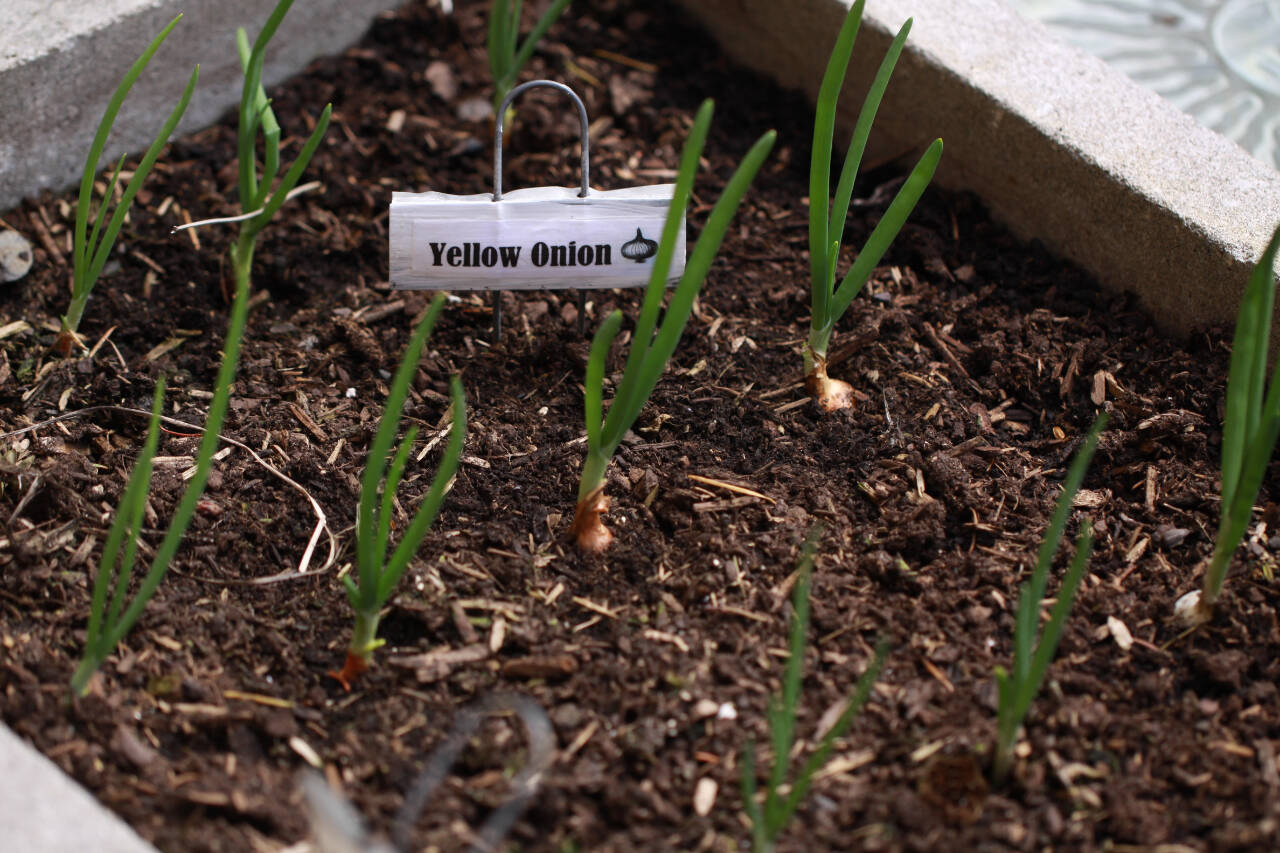There is so much to do and think about in the April vegetable garden that even seasoned gardeners may find themselves wandering between projects.
If you haven’t already taken a close look at your soil, that should be number one on your to-do list. Healthy soil is the foundation of any garden, without which all other efforts may be unsuccessful.
Compacted or heavy clay soil stays cold and wet longer than soil having more organic matter. Sandy soil is often too porous and will not retain the moisture or nutrients where they are needed. The solution to both clay or sand soil problems is the same.
Once the soil is dry enough to work, thoroughly incorporate good quality compost into your planting beds. Organically rich soil delivers water, nutrients, and air to the plant roots effectively. If you don’t have compost, bagged compost products are readily available at garden stores.
If you don’t know if your soil is lacking in nutrients, testing it now will allow time to incorporate needed nutrients before spring planting. The Clallam Conservation District provides soil testing. Details, including how to collect the soil sample, are available online at clallamcd.org.
Note: organic fertilizers take a longer time to break down and become available to plants. If your soil is in need of a quick pick-me-up, consider an application of quick-release fertilizer to get started.
Once garden beds are amended and raised planters are topped off with compost or other amendments, it’s time to lay soaker hoses or a drip system before planting. Waiting to lay out these materials when plants are in place or after seeds sprout can result in damage to the plants.
No garden watering system is effective without a timer. That can’t be stressed enough! Even a simple manual timer at the hose bib can protect plants from overwatering accidents.
In the vegetable garden, plan to sow cool season vegetables, including Asian greens, beets, carrots, chard, lettuce, onions, parsnips, peas, radishes, and spinach directly into the garden. (When planting carrots, cover them immediately after planting with row cover to protect against carrot rust fly.)
Transplant cool-season vegetable starts into the garden after the average last frost date. It is important to note that the average last frost date varies greatly from one location to another on the Olympic Peninsula. If in doubt about the last frost date, the information is available online. A good website for weather data is irrigation.wsu.edu; select “Weather Data” from the menu on the left and then select “Frost Dates.” Always be prepared to cover tender plants in case of a late frost.
Before transplanting, “harden-off” seedlings to outdoor conditions gradually over seven to 10 days. Start by taking them out to a protected area for a few hours for a day or two. Increase the time and sun intensity for another few days.
Ultimately, leave them in an unheated building and then outdoors overnight. Be prepared to cover them or bring them in if temperatures threaten to drop below 45 degrees at night.
A warning to vegetable gardeners new to the Clallam County climate: April is not the time to plant heat-loving crops outdoors. Plants like tomatoes, peppers, squash and basil will not benefit from early outdoor planting. In fact, cold soil temperatures can damage or kill these plants. A soil temperature of at least 50 degrees is recommended before planting.
However, early April is a good time to start those tomatoes, peppers, eggplants, squash and basil indoors, under lights or in a greenhouse.
It is also time to fertilize fall planted garlic with a balanced fertilizer (equal amounts of N, P and K) when tops are 6–8 inches tall. In the case of fertilizer, more is not better. Generally, applying the lowest recommended amount is recommended.
You can never weed your garden too early or too much to help prevent pests and diseases. It is a constant on any gardener’s to-do list. Also patrol for insects and pests and control manually before they cause problems. Pay close attention to cabbage family crops, frequently inspecting for caterpillars. Note that some insects may cause a little cosmetic damage but may not harm the crop.
Avoid using products that may hurt beneficial insects. Please remember it is every gardener’s responsibility to read the package directions on all garden products, organic or nonorganic, and apply them correctly.
Susan Kalmar is a certified WSU Clallam County Master Gardener.


